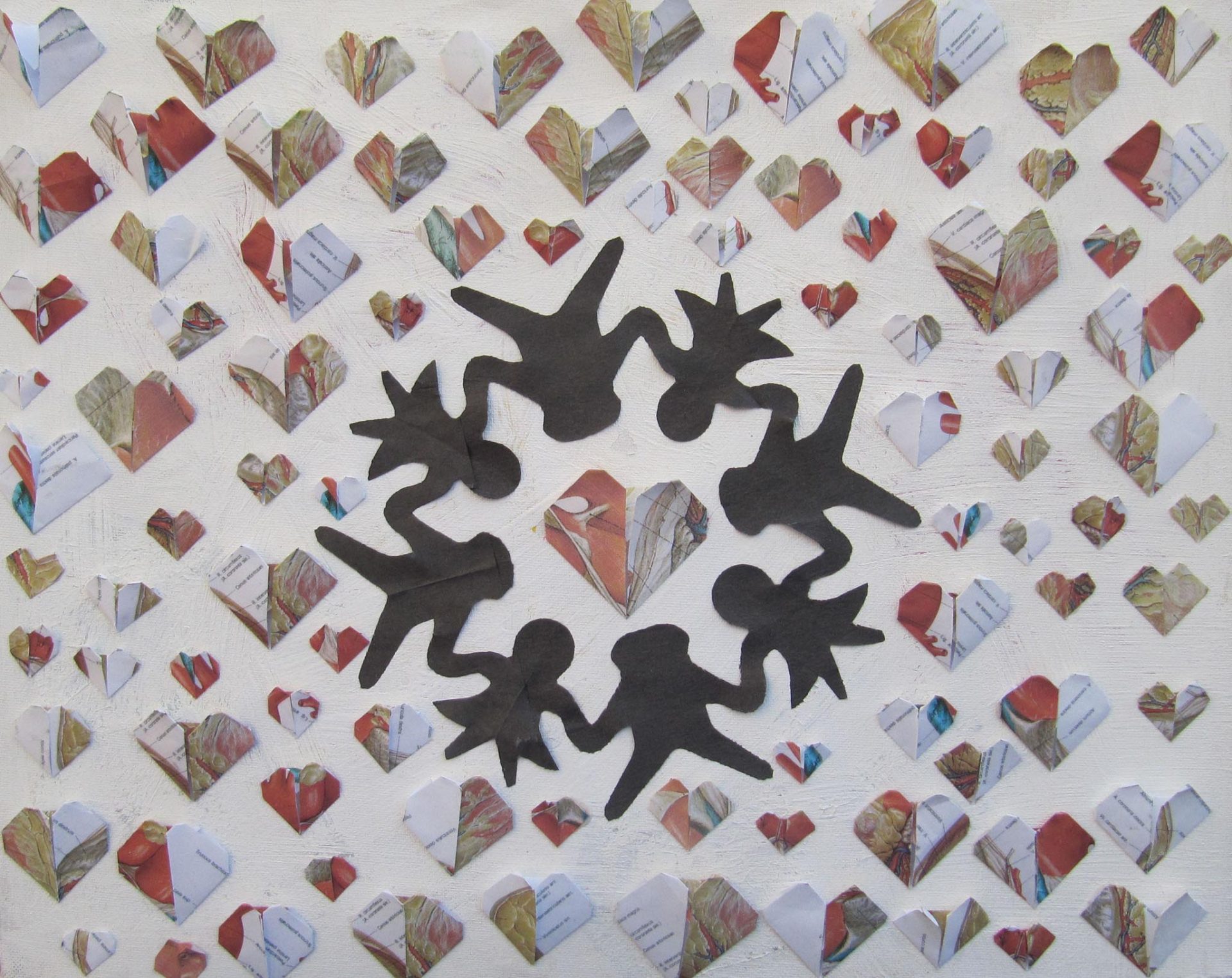Hearts
During this whole experience I felt as though the doctors and I were focusing on two different hearts, the anatomical heart and what I like to think of as the “loving heart”- the heart you see on Valentine’s Day cards. Whilst their minds were focused on the aorta, heart valves, atria, ventricles and O2 sats, mine was thinking about his love, his warmth, his personality and all the memories and happiness that I associate with his symbolic heart. I made these origami heart shapes out of paper printed with the anatomical heart – I did this to represent how I hope to learn from my experiences with my daddy that doctors need to focus not only on the anatomical heart but also the pieces that make up the “loving heart”. I also tried to show how in every day practice it is often the loving heart a doctor must search for, however in this representation the loving heart is clear and it is the anatomical heart which only becomes visible when looking at it closely. Every heart is made from a different part of the paper, is a different size and each is made individually with its own little faults and quirks. I did this to show that not everyone has the same loving heart and this too is something we must take into account in our future careers.
British Heart Foundation research shows that everyday 93 children lose their dad to heart disease. For this reason I made exactly 92 smaller hearts – one each for the other children who lost their daddy the same day that I lost mine.

I really like how you’ve taken a statistic – that 93 children lose their dad to heart disease each day – and turned it into something so hard-hitting. The description of your own personal story is very moving, and your point about the heart having two very different meanings acts as a reminder that doctors aren’t just treating diseases but are treating people.